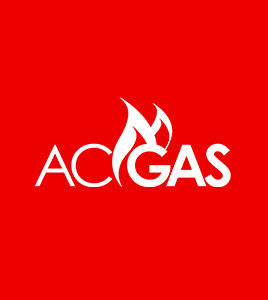FREQUENTLY ASKED QUESTIONS
-
Are ACGAS composite cylinders safe?
-
How do ACGAS composite LPG cylinders behave in case of fire?
-
What is the three-piece ACGAS composite LPG cylinder concept?
-
What about corrosion and chemical resistance?
-
What maintenance or refurbishing is necessary?
-
What kind of information is printed on the cylinder?
-
How do ACGAS cylinders perform in colder climates?
-
How do ACGAS cylinders perform in desert climates?
-
How do ACGAS cylinders perform in coastal or tropical climates?
-
Are the cylinders from ACGAS UV resistant?
-
What about re-testing?
-
What are the standard colours of the cylinders?
-
Are ACGAS cylinders approved for use in my area?
Are ACGAS composite cylinders safe?
Safety has been and will continue to be the most important design factor in our development projects. The safety of ACGAS composites is equivalent to or higher than steel cylinders.
ACGAS composite LPG cylinders have been approved by SIRIM and DOSH. The European approval is based on BS-EN14427:2014 and ISO11119-3:2013 (E) in compliance with ADR/RID2013.
How do ACGAS composite LPG cylinders behave in case of fire?
ACGAS composite LPG cylinders can be burned in a fire without any concern for explosion. After a few minutes in a fire, the resin will be burned off and the plastic liner and casing melted. The LPG will then "breathe" through the cylinder wall and burn off in a controlled manner.
What is the three-piece ACGAS composite LPG cylinder concept?
- Layer 1: The blow-moulded liner (HDPE) is the seamless gas barrier layer with a boss for mounting the valve onto the cylinder. The neckring is made with aluminium insert.
- Layer 2: This composite load-carrying material is filament-wound Aramid Fiber which has a tremendous capacity to withstand pressure.
What about corrosion and chemical resistance?
ACGAS composite LPG cylinders do not corrode. All applied materials are non-corrosive and have been carefully selected to ensure maximum chemical stability and resistance to concentrations of acids or solvents that may appear in the LPG or in the environment where the LPG cylinders may be stored or used.
Additionally, the pressure vessel is protected by a coating on the outside.
What maintenance or refurbishing is necessary?
For aesthetic purposes, ACGAS composite LPG cylinders can be easily and inexpensively cleaned by power-washing with a soap and water solution. Therefore, shot-blasting or painting of the cylinders is not necessary, please see the paragraph Retesting below.
What kind of information is printed on the cylinder?
ACGAS composite LPG cylinders are marked according to the guidelines stipulated in the applied approval and in accordance with the approval authority having jurisdiction. As a minimum the cylinders are marked with serial number, approval marking/ number, approval authority ID, country of origin, manufacturer ID and volume. As an option, the cylinders can be marked with a corporate logo or other customer-specific markings. The cylinders may also be fitted with RFID/transponder chips. ACGAS will supply the customer with a database file corresponding to each cylinder lot.
How do ACGAS cylinders perform in colder climates?
As part of the approval testing program, ACGAS composite LPG cylinders are tested and approved down to -40C. The use of LPG in low temperatures is, of course, limited by the vaporization capability of the specific LPG mix.
How do ACGAS cylinders perform in desert climates?
The composite LPG cylinders from ACGAS are designed to withstand temperatures well above 65°C. Long-term use in hot climate shows that the cylinder is not affected and remains safe to use in these extreme climates.
How do ACGAS cylinders perform in coastal or tropical climates?
The materials for the cylinders from ACGAS have been carefully chosen. One of the great benefits of the selected materials is that they are unaffected by salt and humidity. Corrosion does not occur and therefore the cylinders are well adapted for use in hot, humid and saline environments.
Are the cylinders from ACGAS UV resistant?
As stated above, the applied materials have been chosen for different considerations. One of them is to ensure maximum UV stability. In addition, UV additives are applied to the outer layer material depending on the geographic zone where the cylinders are to be used.
What about re-testing?
We recommend following the stipulations in EN14427 and SIRIM or depending on the jurisdiction, the applicable retesting requirement.
What are the standard colours of the cylinders?
The outer layer of ACGAS composite LPG cylinders coated by protective PUR Elastomor Coating allows for certain color variations and flexsiblity. The standard for the lower part is red. The handle and footing-ring can be supplied in a wide variety of colors. The current standard colors are:
- Red Black
Specific colors can be applied based on a RAL or Pantone definition. ACGAS will enter Malaysia market with Red handle footing-ring and Black coating.
Are ACGAS cylinders approved for use in my area?
ACGAS composite cylinders are approved for use in Asian. For more information, see the section Dealership.
